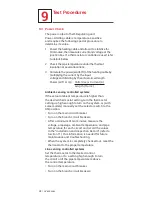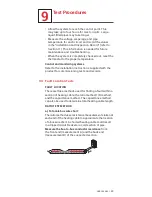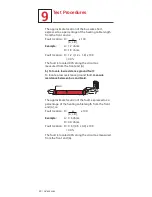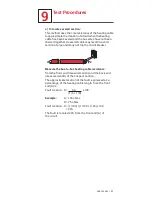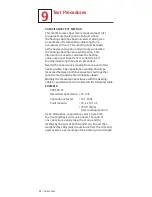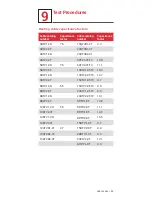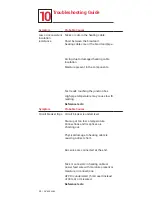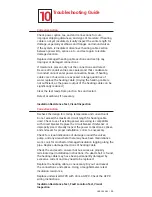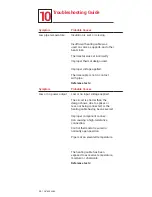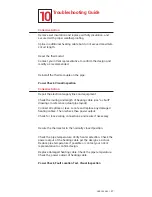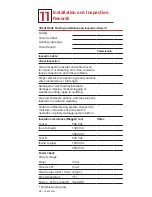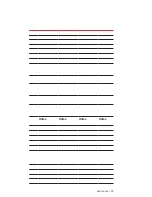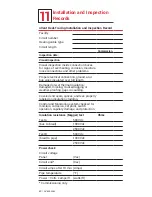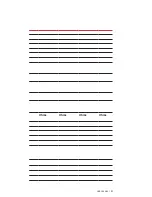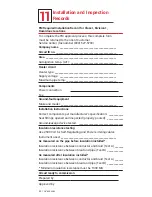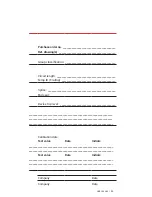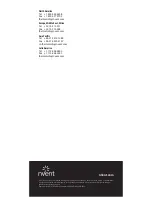
Troubleshooting Guide
10
nVent.com | 37
Symptom
Probable Causes
Corrective Action
Low pipe temperature
Insulation is wet, or missing.
Remove wet insulation and replace with dry insulation, and
secure it with proper weatherproofing.
Insufficient heating cable was
used on valves, supports, and other
heat sinks.
Splice in additional heating cable but do not exceed maximum
circuit length.
Thermostat was set incorrectly.
Reset the thermostat.
Improper thermal design used.
Contact your nVent representative to confirm the design and
modify as recommended.
Improper voltage applied.
Thermocouple is not in contact
with pipe.
Reinstall the thermocouple on the pipe.
Reference tests:
Power Check, Visual Inspection
Symptom
Probable Causes
Corrective Action
Low or no power output
Low or no input voltage applied.
Repair the electrical supply lines and equipment.
The circuit is shorter than the
design shows, due to splices or
tees not being connected, or the
heating cable having been severed.
Check the routing and length of heating cable (use “as built”
drawings to reference actual pipe layout).
Connect all splices or tees. Locate and replace any damaged
heating cables. Then recheck thea power output.
Improper component connec-
tion causing a high-resistance
connection.
Check for loose wiring connections and rewire if necessary.
Control thermostat is wired in
normally open position.
Rewire the thermostat in the normally closed position.
Pipe is at an elevated temperature.
Check the pipe temperature. Verify heater selection. Check the
power output of the heating cable per the design vs. actual.
Reduce pipe temperature if possible or contact your nVent
representative to confirm design.
The heating cable has been
exposed to excessive temperature,
moisture or chemicals.
Replace damaged heating cable. Check the pipe temperature.
Check the power output of heating cable.
Reference tests:
Power Check, Fault Location Test, Visual Inspection






